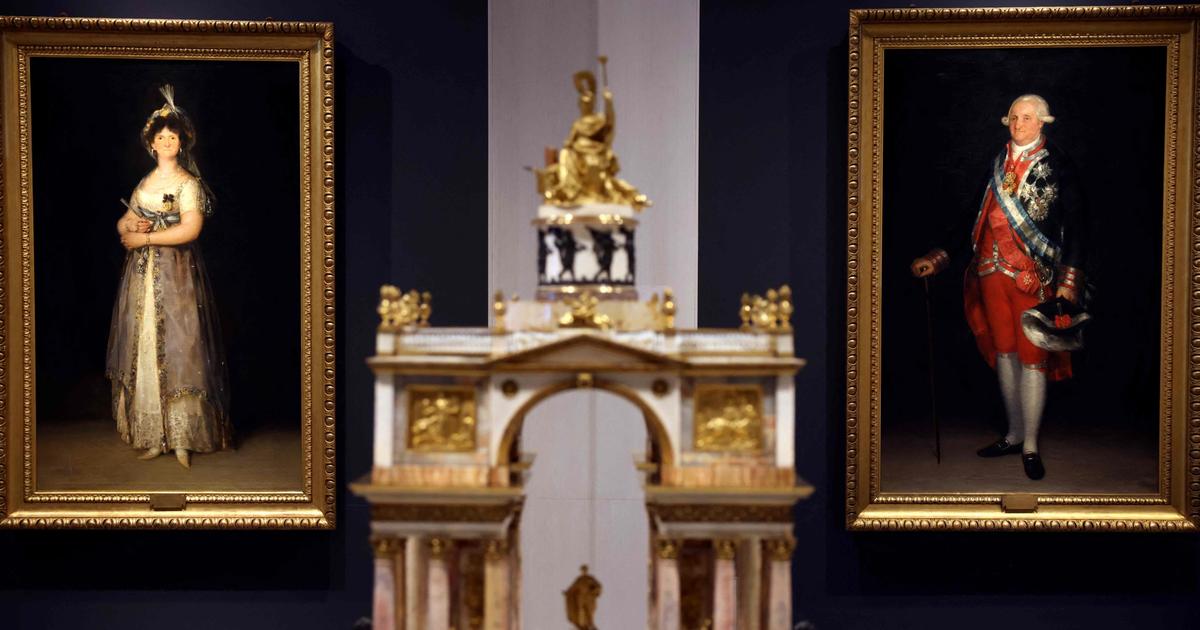Leaving luxurious palaces to be hung on the clean walls of an exhibition hall, hundreds of works acquired by the Spanish dynasties have been brought together in a new setting with ultramodern architecture: the Gallery of Royal Collections.
The last public appearance of the White Horse by the Spanish painter Diego Velázquez (1599-1660) dates back to 2015, during a temporary exhibition in Paris. The rest of the time, "it hung in a room of the Royal Palace" in Madrid, adjacent to this new museum that will open at the end of June, says Leticia Ruiz Gómez, director of the royal collections. The huge painting is one of the centerpieces of the floor dedicated to the House of Habsburg that ruled Spain in the sixteenth and seventeenth centuries.
See alsoFrançoise Gilot, painter in the shadow of the Minotaur
A few steps away is a Caravaggio, or the Triumph of Time, a tapestry more than three meters high that would have belonged to Isabella the Catholic (1451-1504), acquired in February by the Ministry of Culture for one million euros.
Gallina Ciega, tapestry by Fransisco de Goya (1789) exhibited in the Royal Collection Gallery. THOMAS COEX / AFP
In a Spanish capital that already has museums with international influence such as the Prado or the Reina Sofia, the Gallery of Royal Collections will be "a showcase" and will "show the diversity, richness and quality of what the Spanish kings have collected for five centuries," explains Ana de la Cueva, president of the public body managing the Spanish National Heritage.
The idea of creating a museum to exhibit the royal collections had already been mentioned a century ago but the project had failed due to the Civil War (1936-1939).
"Crazy painter"
A second floor is dedicated to the Bourbon dynasty, of the current King Felipe VI, with works by Francisco de Goya (1746-1828), a carriage covered with bronze of the nineteenth century or the "portrait from the back" of King Charles IV, of which we see only the back of the wig and which earned its author, Juan Bauzil, the nickname "mad painter".
Royal carriage exhibited at the Royal Collection Gallery. THOMAS COEX / AFP
A third level will host temporary exhibitions but also an "immersive" cube where 360° images of dozens of "royal sites" across Spain, from which the exhibits are derived, will be projected.
Most of the 650 works in the permanent exhibition were previously not accessible and gathered dust in storerooms or wings of palaces and monasteries closed to the public. They will be renewed regularly, the museum being equipped with state-of-the-art reserves to preserve the thousands of works from the royal collections.
«
Our role is to show them so that citizens are aware that this heritage belongs to everyone, unlike other countries. ", she says, pointing to monarchies in which many works belong to the royal family and not to the state.
Details of a royal carriage on display. THOMAS COEX / AFP
A concrete setting
As the appeal of the monarchy erodes over time, the challenge for this new gallery will be to attract as many visitors as the nearby Royal Palace, which averages about 1.5 million a year, compared to more than 2.5 for the Alhambra Palace in Granada, the most visited monument in the country.
The establishment relies on its architecture, which has won several international awards. The construction between 2005 and 2016 of the gallery required digging the rock of the cornice overlooking the royal gardens.
Light grey concrete porticoes, between which huge bay windows are interspersed, have replaced the cliff, so that the building is almost invisible from the heights of the palace.
The Archangel Saint Michael defeating the Devil (1692), by the Spanish sculptor Luisa Roldan. THOMAS COEX / AFP

